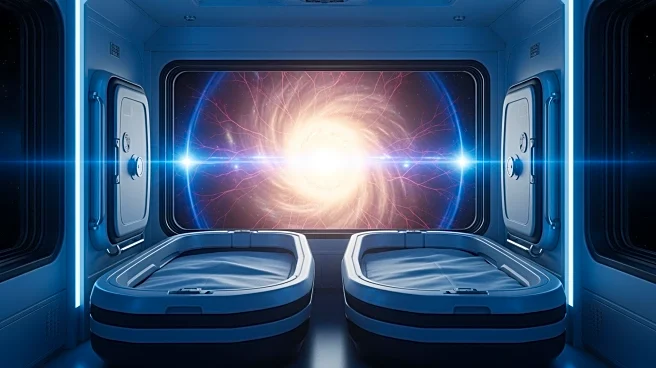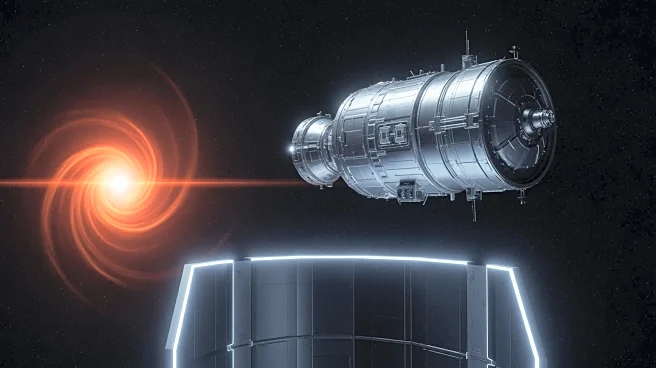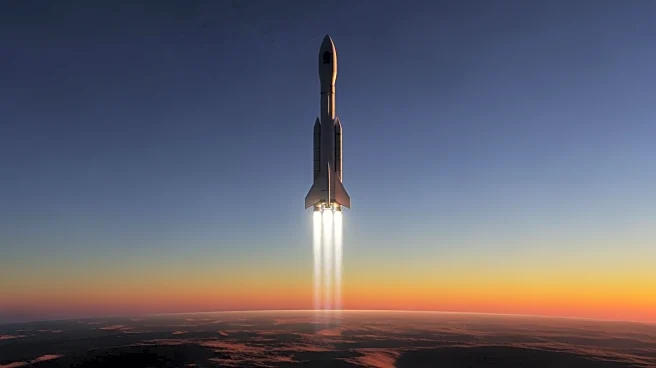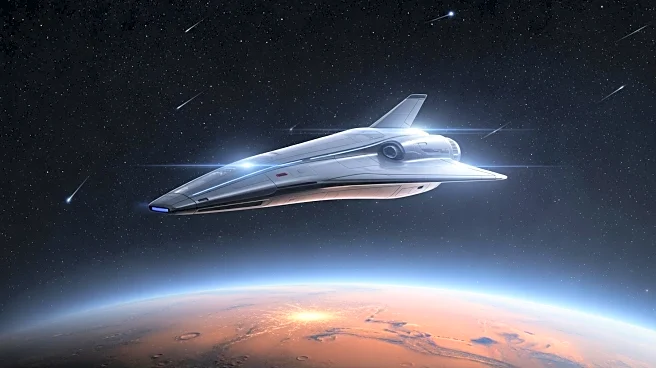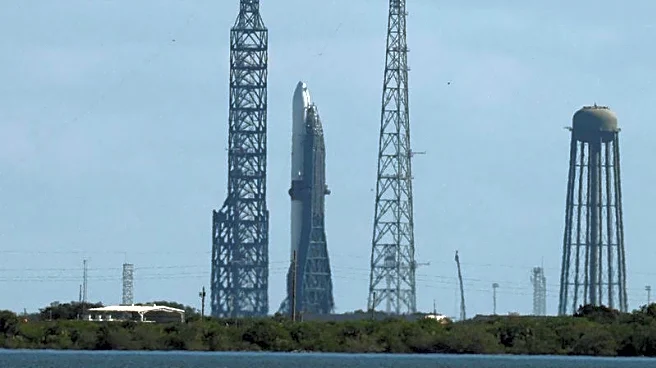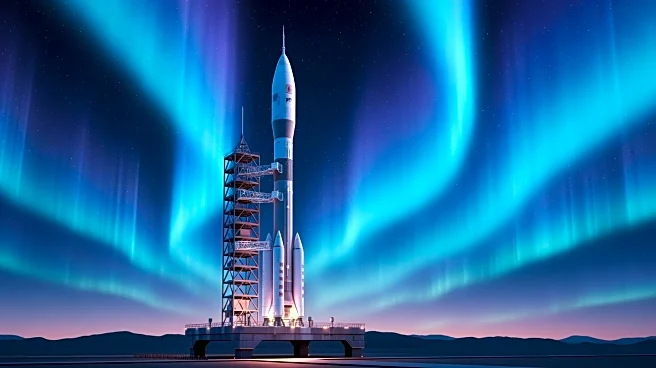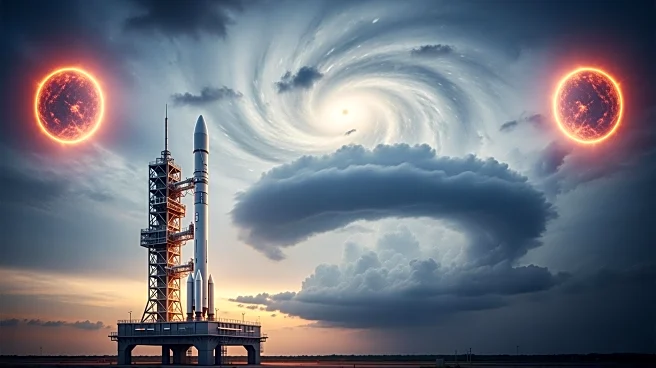What's Happening?
Astronauts aboard the International Space Station (ISS) have altered their sleeping arrangements due to the threat posed by solar particles from a 'cannibal' solar storm. The storm, one of the largest
since 2005, was caused by a series of solar eruptions that could interfere with satellites and Earth's magnetic field. The Russian cosmonauts on the ISS were instructed to spend the night in the laboratory module as a precaution against increased radiation risk. The storm has triggered auroras across the globe and delayed the launch of Blue Origin's New Glenn rocket.
Why It's Important?
The solar storm poses a significant risk to astronauts due to high-energy particles that can harm those in orbit. It also threatens satellite operations and navigation systems on Earth, potentially disrupting communication and energy infrastructure. The event highlights the challenges of space exploration and the need for robust protective measures against cosmic phenomena. The storm's impact on rocket launches underscores the interconnectedness of space weather and commercial space activities.
What's Next?
Monitoring the solar storm's progression will be crucial for space agencies and satellite operators. The ISS crew will continue to take precautions until the radiation risk subsides. The event may prompt further research into protective technologies for astronauts and satellites. Space agencies might review protocols for handling similar events in the future, ensuring the safety of crew members and the integrity of space missions.
Beyond the Headlines
The solar storm highlights the vulnerability of space infrastructure to cosmic events and the importance of international collaboration in space weather monitoring. It raises questions about the long-term sustainability of human activities in space and the need for advancements in radiation shielding technologies. The event may influence future policies on space exploration and the development of resilient systems to withstand cosmic phenomena.


